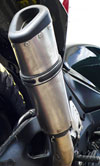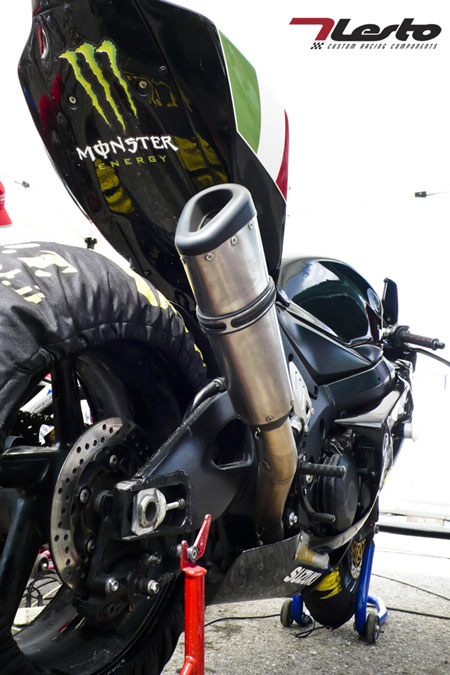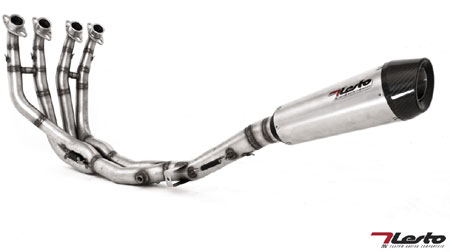Superstock and Superbike
 I recently spoke to Emmanuele Nicali of Lesto Racing at the Monza World Superbike races about the company's motorcycle race products. Lesto supplies both road and race motorcycle exhausts to a number of teams involved in various Italian national championships, including CIV (Italian Superbike championship) and the Superstock 600 and 1000cc series. It also plans to have its exhaust systems on race machines at the Isle of Man TT races in 2011. Fig. 1 shows a race system fitted to a race Suzuki.
I recently spoke to Emmanuele Nicali of Lesto Racing at the Monza World Superbike races about the company's motorcycle race products. Lesto supplies both road and race motorcycle exhausts to a number of teams involved in various Italian national championships, including CIV (Italian Superbike championship) and the Superstock 600 and 1000cc series. It also plans to have its exhaust systems on race machines at the Isle of Man TT races in 2011. Fig. 1 shows a race system fitted to a race Suzuki.
The company uses racing as a way to improve its products through the increased speed of development, and the teams it supplies are an active part of this process. It names CDS Racing Team and SGM Tecnic as teams with a lot of experience that, according to Nicali. "help us test our product on track and boost performance under racing pressure".
There are very strong similarities between the design of its race systems and those supplied for road use, with the main differences being in the materials used in their manufacture. As the road products are aimed squarely at the sportsbike rider, having a strong race image is important.
I asked Nicali about material choices and manufacturing methods for its exhaust and, as we might reasonably expect, the choice depends on the intended use, with stainless steel being for production motorcycles, but "titanium welded with the TIG method" for race systems. (Note: TIG stands for Tungsten Inert Gas)

The price of full titanium systems is beyond the budget of most roadbike riders, but race teams demand lightweight systems and the higher price is one that they deem to be worth paying. The silencers are available in titanium for race systems, with the ends machined from Ergal, an aluminium alloy, or formed in carbon-fibre reinforced polymer (CFRP). Fig. 2 shows a typical TIG-welded system.

I asked the company about its most common exhaust system configurations for racing, as applied to four-cylinder machinery. Although two- and three-cylinder engines are eligible for Supersport, Superstock and Superbike competition, four-cylinder engines still dominate in terms of numbers participating, and inline four-cylinder engines in particular are the most numerous.
Lesto says the most common system now is 4-2-1, and in this it agrees with a number of those teams competing in World Superbike. The advantage of these systems is improved 'rideability' of the motorcycle, with the rider being rewarded with a greater spread of torque than is available with a 4-1 system. Lesto did say though that it is working on improving performance further.
I asked Nicali what special features Lesto has in terms of exhaust system design, and he went into detail on some features which offer improved silencing. He says the 'triangular' section silencer is "very useful in terms of efficiency of the exhaust". The company also has an adjustable device in the silencer it calls the DB Killer which, as its name suggests, is aimed at noise reduction. It can be adjusted and fixed in one of five positions, and its purpose is to change the length of perforated triangular pipe within the silencer, thus affecting the silencing capability of the system.
Fig. 1 - Exhaust system fitted to a motorcycle competing in the Italian national championship (Courtesy of Lesto Racing)
Fig. 2 - Typical TIG-welded construction (Courtesy of Lesto Racing)
Written by Wayne Ward